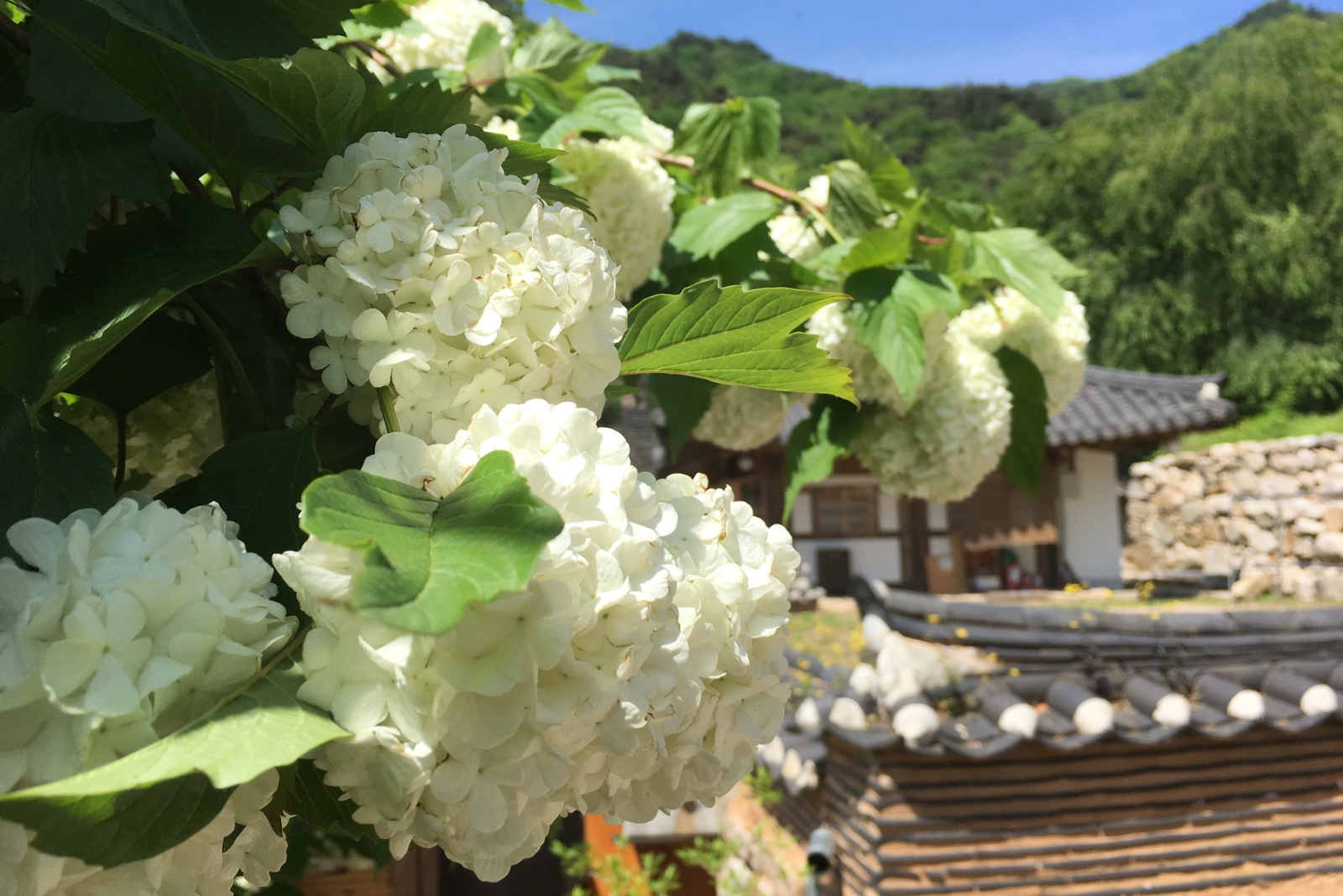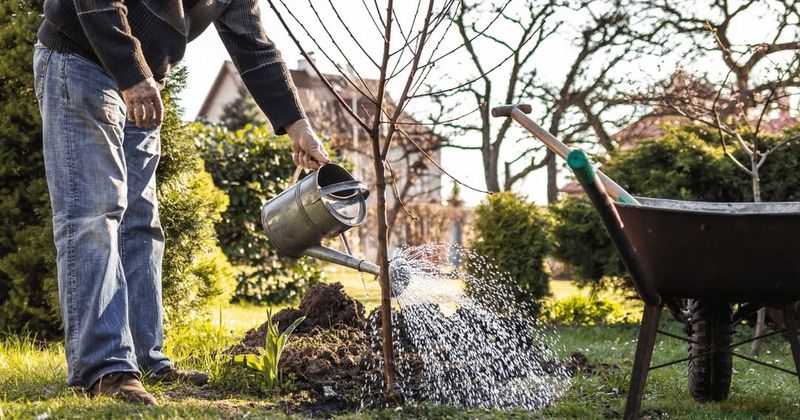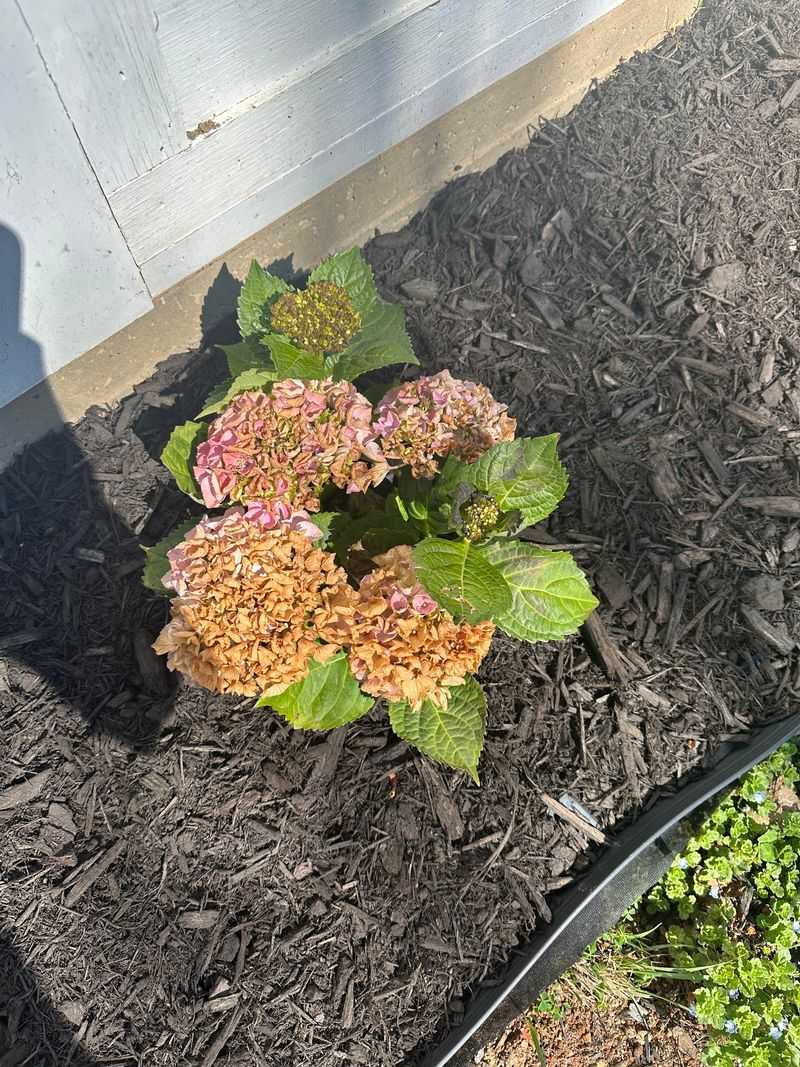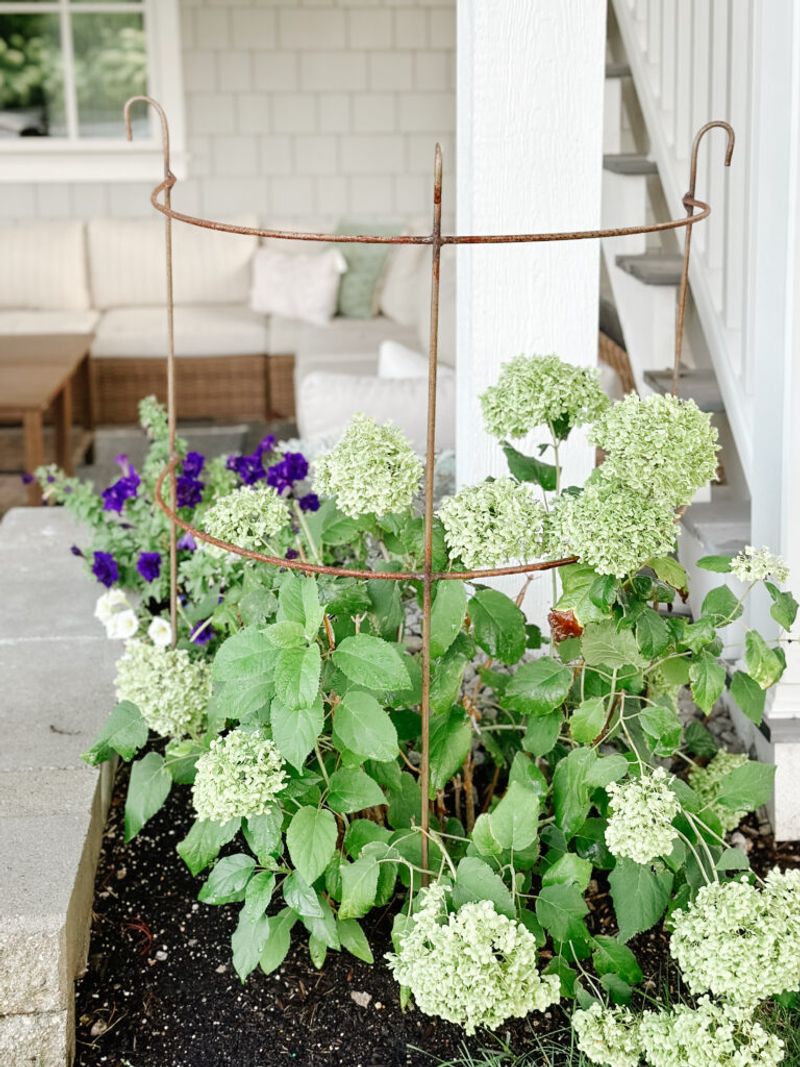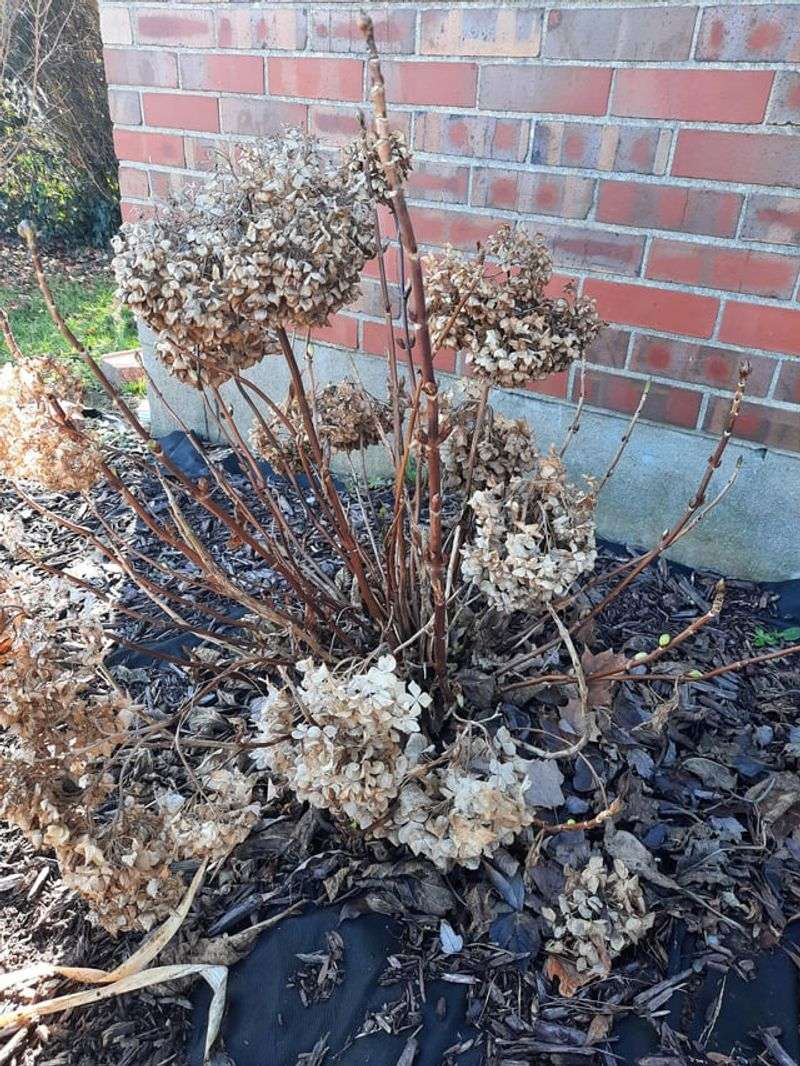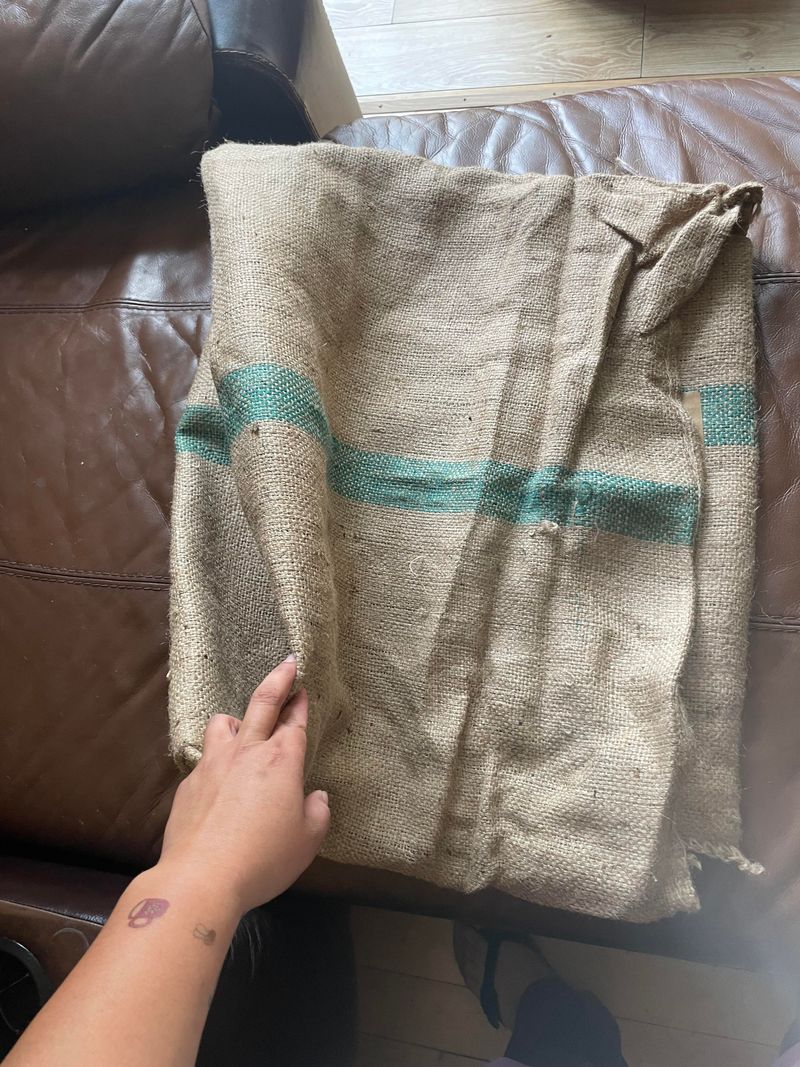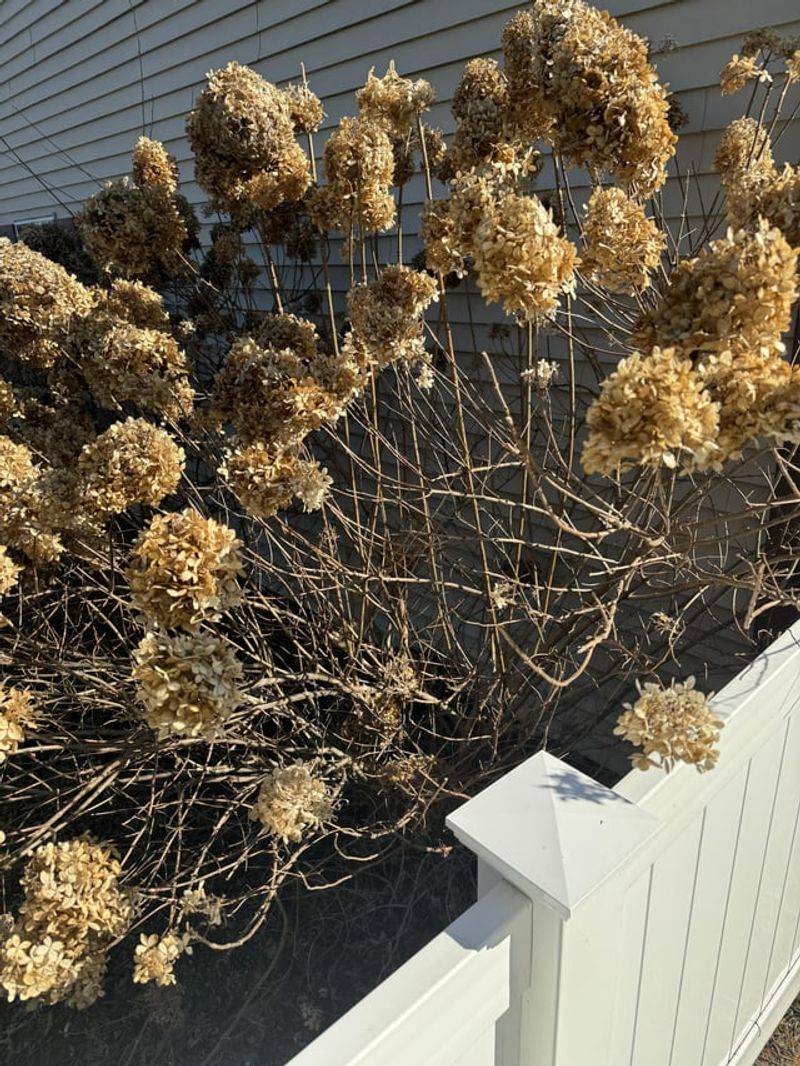Wisconsin winters can be brutal on your beautiful hydrangeas, and once hard frosts arrive, it might be too late to save those gorgeous blooms for next year.
Your hydrangeas need special care before temperatures drop below freezing, especially since Wisconsin’s unpredictable weather can catch gardeners off guard. Taking action now will help your plants survive the coldest months and come back stronger in spring.
1. Water Deeply Before The Ground Freezes
Hydrangeas entering winter with dry roots face serious danger when temperatures plummet. Giving your plants a thorough soaking before the ground freezes solid helps them store moisture they’ll desperately need during harsh winter months.
Aim to water deeply at least once or twice in late fall, especially if rainfall has been scarce. Focus the water around the root zone rather than the leaves.
Well-hydrated roots can better withstand freezing temperatures and will bounce back faster when spring arrives in Wisconsin.
2. Apply A Thick Layer Of Mulch Around The Base
Mulch acts like a cozy blanket for your hydrangea’s roots, keeping soil temperatures more stable when Wisconsin weather goes haywire. Spread a generous 4 to 6-inch layer of wood chips, shredded bark, or leaves in a circle around each plant.
Keep the mulch a few inches away from the main stems to prevent rot and pest problems. The insulation helps prevent the freeze-thaw cycles that can damage delicate root systems.
Fresh mulch also adds nutrients as it breaks down over time.
3. Build A Protective Wire Cage Structure
Creating a simple cage around your hydrangea gives you a framework for adding insulation while protecting branches from Wisconsin heavy snow and ice damage. Use chicken wire or hardware cloth to form a cylinder that extends slightly taller than your plant.
Secure the cage with wooden stakes driven into the ground so winter winds won’t knock it over. This barrier also keeps hungry rabbits and deer from munching on vulnerable branches during food-scarce winter months.
The structure makes filling with insulation materials much easier too.
4. Fill The Cage With Insulating Materials
Once your cage is in place, stuff it full of insulating materials like dry leaves, straw, or pine needles to create a protective cocoon. These natural materials trap air pockets that shield your hydrangea from bitter Wisconsin winds and extreme temperature swings.
Pack the materials loosely rather than compressing them, as air circulation prevents mold and rot. Wait until after the first hard frost to fill the cage, which helps your plant properly harden off.
Remove the filling gradually in spring when temperatures stabilize.
5. Wrap Burlap Around Exposed Branches
Burlap creates an effective windbreak that shields tender buds from desiccating Wisconsin winter winds without trapping too much moisture. Wrap the material loosely around the entire plant, securing it with twine or garden clips at several points.
Natural burlap breathes better than plastic, preventing the condensation buildup that leads to fungal diseases and rot. Leave the top slightly open for air circulation unless a severe cold snap is forecast.
Lighter-colored burlap reflects winter sun, preventing premature bud break during warm spells.
6. Protect Flower Buds On Bigleaf Hydrangeas
Bigleaf hydrangeas bloom on old wood, meaning next summer’s flowers are already formed on branch tips right now. Losing those buds to frost means no blooms next year, which breaks every gardener’s heart.
Give extra attention to the top 12 to 18 inches of each branch where buds develop. Some Wisconsin gardeners gently bend flexible branches to the ground and cover them with mulch for maximum protection.
This extra effort pays off with spectacular blooms when warm weather returns.
7. Monitor Weather And Adjust Protection As Needed
Wisconsin weather changes faster than you can say “polar vortex,” so staying alert to forecasts helps you adjust protection before damage occurs. Check your hydrangeas after major storms to ensure coverings haven’t blown away or collapsed under heavy snow.
Unusually warm winter spells might require temporarily removing some insulation to prevent premature growth. Keep extra mulch and burlap handy for emergency reinforcement when severe cold snaps appear in the forecast.
Your vigilance makes the difference between survival and loss.

